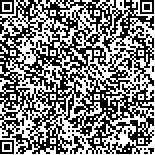| 引用本文: | 张敏,靳晓杰,李程豪,后叶虎,王锐峰,林佳,邱璐,姚娟,李亚玲,刘永琦.敦煌医方大泻脾汤治疗胃癌的体外活性及化学生物信息学研究[J].中国现代应用药学,2023,40(3):302-314. |
| ZHANG Min,JIN Xiaojie,LI Chenghao,HOU Yehu,WANG Ruifeng,LIN Jia,QIU Lu,YAO Juan,LI Yaling,LIU Yongqi.Study on the in Vitro Activity and Chemical Bioinformatics of Dunhuang Ancient Medical Prescription Daxiepi Decoction in Treating Gastric Cancer[J].Chin J Mod Appl Pharm(中国现代应用药学),2023,40(3):302-314. |
|
| |
|
|
| 本文已被:浏览 1304次 下载 738次 |

码上扫一扫! |
|
|
| 敦煌医方大泻脾汤治疗胃癌的体外活性及化学生物信息学研究 |
|
张敏1,2, 靳晓杰1,3,4,2, 李程豪3, 后叶虎3, 王锐峰3, 林佳1,2, 邱璐3, 姚娟1,2, 李亚玲3, 刘永琦3,4
|
|
1.甘肃中医药大学, 药学院, 兰州 730000;2.西北中藏药协同创新中心, 兰州 730000;3.甘肃中医药大学, 甘肃省高校重大疾病分子医学与中医药防治研究重点实验室, 兰州 730000;4.甘肃中医药大学, 敦煌医学与转化教育部重点实验室, 兰州 730000
|
|
| 摘要: |
| 目的 利用化学生物信息学探究敦煌大泻脾汤治疗胃癌的潜在作用机制及物质基础。方法 CCK-8检测细胞增殖情况;流式细胞术检测细胞凋亡和周期情况。TCMSP数据库下载大泻脾汤中药化合物,Swiss Target Prediction预测化合物潜在靶点。Drugbank、Genecards、TTD及DisGeNET数据库检索胃癌靶点。STRING数据库分析蛋白互作并利用Clusters模块进行靶点聚类。CytoHubba插件筛选大泻脾汤治疗胃癌的核心靶点,ClueGO插件进行核心靶点KEGG富集分析。分子对接评估靶点-化合物亲和力,分子动力学模拟探究动态分子机制。结果 细胞实验结果显示,大泻脾汤冻干粉能够促进胃癌细胞凋亡,可使其细胞周期被阻滞在G0-G1期(P<0.05),抑制其增殖(P<0.05)。网络药理学分析得到大泻脾汤与胃癌的共有靶点188个,通过Clusters模块聚类得到参与炎症反应、血管生成及细胞生长分化的3类靶点,主要涉及TNF signaling pathway、PD-L1 expression and PD-1 checkpoint pathway in cancer及p53 signaling pathway等信号通路。分子对接结果显示,TNF、EGFR及AKT1与核心成分的亲和力最好;粗毛甘草素B、甘草异黄烷酮、5-异戊二烯基紫铆花素等与各潜在关键靶点的亲和力均较好。通过50 ns的分子动力学模拟发现潜在活性分子与其靶蛋白形成了稳定的分子间作用。结论 本研究对敦煌医方大泻脾汤潜在起效的物质基础和分子机制进行了挖掘,为其通过“寒热并用、调和阴阳”治疗胃癌的研究和临床应用提供化学生物信息学参考。 |
| 关键词: 敦煌医方 大泻脾汤 胃癌 计算机辅助药物设计 网络药理学 分子机制 物质基础 |
| DOI:10.13748/j.cnki.issn1007-7693.2023.03.003 |
| 分类号:R285.5 |
| 基金项目:甘肃省教育厅高等学校产业支撑计划项目(2020C-15);甘肃省青年科技人才托举工程项目(GXH20210611-02);甘肃省高校大学生就业创业能力提升工程项目(甘教学〔2021〕3号) |
|
| Study on the in Vitro Activity and Chemical Bioinformatics of Dunhuang Ancient Medical Prescription Daxiepi Decoction in Treating Gastric Cancer |
|
ZHANG Min1,2, JIN Xiaojie1,3,4,2, LI Chenghao3, HOU Yehu3, WANG Ruifeng3, LIN Jia1,2, QIU Lu3, YAO Juan1,2, LI Yaling3, LIU Yongqi3,4
|
|
1.Gansu University of Chinese Medicine, School of Pharmacy, Lanzhou 730000, China;2.Northwest Collaborative Innovation Center for Chinese Medicine, Lanzhou 730000, China;3.Gansu University of Chinese Medicine, Gansu University Key Laboratory for Molecular Medicine & Chinese Medicine Prevention and Treatment of Major Diseases, Lanzhou 730000, China;4.Gansu University of Chinese Medicine, Dunhuang Key Laboratory of Medicine and Transformation, Ministry of Education, Lanzhou 730000, China
|
| Abstract: |
| OBJECTIVE To explore the potential mechanism and material basis of Dunhuang ancient medical prescription Daxiepi decoction in the treatment of gastric cancer based on chemical bioinformatics method. METHODS Cell proliferation was detected by CCK-8; cell apoptosis and cycle situation was detected by flow cytometry. The Chinese medicine compounds of Daxiepi decoction were downloaded from TCMSP database, Swiss Target Prediction was used to predict the potential targets of compounds. Drugbank, Genecards, TTD and DisGeNET databases were used to obtain gastric cancer targets. Protein interactions were analyzed by STRING database and target clustering was performed using Clusters module. CytoHubba was used for network topology analysis to determine the core targets of Daxiepi decoction in the treatment of gastric cancer, and ClueGO was used for KEGG enrichment analysis of the core targets. Furthermore, molecular docking was used to evaluate the target-compound affinity. dynamic molecular mechanism was study by molecular dynamics simulation. RESULTS The result of cell test showed that the freeze-dried powder of Daxiepi could promote the apoptosis of gastric cancer cells, arrest the cell cycle in the G0-G1 phase(P<0.05), and inhibit its proliferation(P<0.05). A total of 188 targets of Daxiepi decoction and gastric cancer were obtained by network pharmacological analysis. Three types of targets involved in inflammatory response, angiogenesis and cell growth, differentiation were obtained through Clusters module, and mainly involving TNF signaling pathway, PD-L1 expression and PD-1 checkpoint pathway in cancer and p53 signaling pathway and other signaling pathways. Molecular docking results showed that TNF, EGFR and AKT1 had the best affinity with the core components; glyasperinB, licoisoflavanone and 5-prenylbutein showed good affinity with various key potential targets. Through 50 ns molecular dynamics simulations, it was found that the potential active molecules formed stable intermolecular interactions with protein. CONCLUSION This study explores the material basis and molecular mechanism of the potential efficacy of Dunhuang ancient medical prescription Daxiepi decoction on gastric cancer, and provides a chemical bioinformatics reference for the research and clinical application of in treating gastric cancer by “combining cold and heat, and harmonizing yin and yang”. |
| Key words: Dunhuang ancient medical prescription Daxiepi decoction gastric cancer computer aided drug design network pharmacology molecular mechanisms material basis |
|
|
|
|
